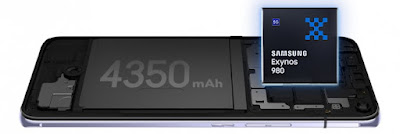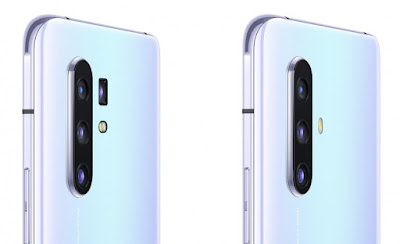With an ever-changing landscape in the smartphone photography world, Vivo decided to get serious with the new X series duo of X30 and X30 Pro.
BBK Electronic's smartphone sub-brand Vivo has just launched two new models for their X series lineup: the X30 and the X30 Pro. Being an X series lineup, the main focus is smartphone photography and judging by the camera setup against the X27 and X27 Pro, Vivo has really stepped up a gear. |
| Photo: Vivo |
Powering both variants are the Exynos 980 chipset, which is Samsung's first chipset with an integrated 5G modem. According to Samsung, it can offer download speed from 2.55Gbps when using sub-6GHz 5G network all the way to a whopping 3.55Gbps when using E-UTRA-NR Dual Connectivity (EN-DC) network. To get you on the go quickly, it features a 4350mAh battery with a 33W wired fast charging.
Only the Dual SIM option is available for both variants. Screen wise, it has a 6.44" 20:9 FHD+ AMOLED screen. Both variants are running Android 9.0 Pie out-of-the-box with Vivo's own Funtouch 10.0 UI skin on top. Vivo only offers 8GB of RAM for both variants but at the same time also offers a choice of 128GB or 256GB UFS 2.1 ROM. While there is no microSD card support, the 3.5mm audio jack, FM Radio, and USB OTG support are all available as standard features.
Since camera hardware is the main talking point, Vivo decided to scrap the X27 and X27 Pro's depth sensor camera in favour of a much more versatile telephoto and ultrawide camera. Both variants feature a Samsung-developed ISOCELL GW1 64MP sensor with Phase Detection Auto Focus (PDAF), Laser AF, and OIS as the main primary wide camera. The ultrawide camera is a typical 8MP sensor with a 16mm lens. The telephoto camera is a revelation as this is the world's first smartphone with a 32MP Quad Bayer sensor and 50mm 2x zoom lens alongside PDAF, Laser AF, and OIS.
At this point, you are wondering if there is any notable difference between the two variants. Even the front selfie camera is the same punch-hole style 32MP Quad Bayer sensor. It turns out that there is one notable difference, and it is to be found at the back.
 |
| X30 Pro on the left, X30 on the right. Photo source: GSMArena |
The X30 Pro gained an additional fourth camera and it features something only seen in Huawei P30 Pro and Oppo Reno 10x zoom to date: a periscope zoom camera. Vivo has joined the club with a 13MP periscope sensor and 135mm 5x zoom lens alongside PDAF, Laser AF, and OIS. More than that, the X30 Pro gains a dual-LED dual-tone flash instead of a single LED flash unit as in the standard X30.
The X30 Pro's dual telephoto camera approach with two different focal lengths definitely makes a more appealing proposition compared to Xiaomi's Mi Note 10, where only the 12MP 2x zoom camera has a true focal length of 50mm whereas the second 5MP 5x zoom camera completely relies on the main camera algorithm and upscaling method.
Both phones are now open for pre-order and expect to be shipped some three to seven days after the official public release date of December 24th for the Pro variant and December 28th for the standard variant. Only three configurations are available for pre-order:
- X30 8GB/128GB: CNY 3,298 (roughly about MYR 1,950)
- X30 Pro 8GB/128GB: CNY 3,998 (roughly about MYR 2,362)
- X30 Pro 8GB/256GB: CNY 4,298 (roughly about MYR 2,540)
At the moment, both phones are only available in China with no word about global availability. Let's just hope that Vivo's top boss would change their mind and sold them globally as this could be the next big thing in smartphone photo zooming.
Would you buy either variant as your next mobile photography gear? Let us know in the comment section down below.

Post a Comment
What do you think of this post? Share your thoughts with us.